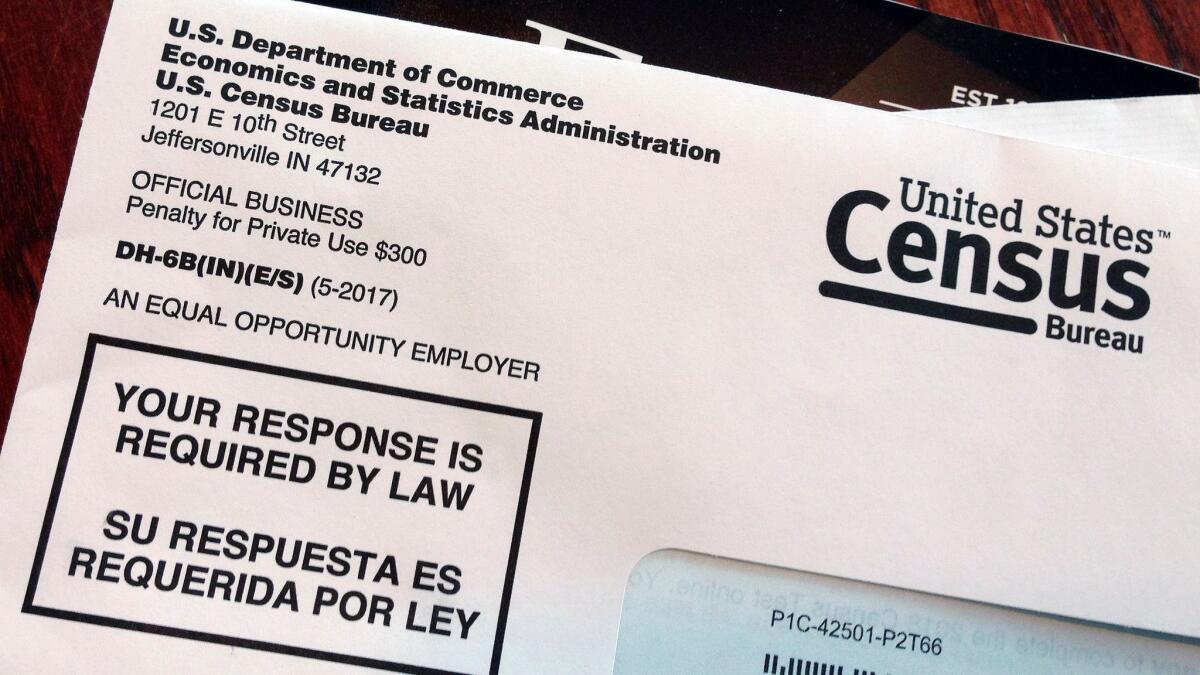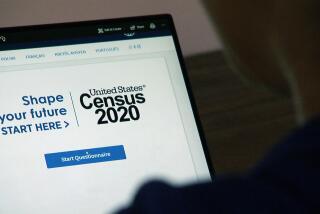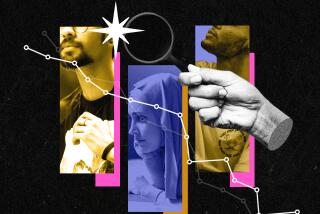Op-Ed: Citizenship questions on the census have no historical pedigree

Later this month, the Supreme Court will take up Commerce Secretary Wilbur Ross’ controversial decision to collect the citizenship status of everyone in the country in the 2020 census. In court filings, the Trump administration has defended the citizenship question as normal and inoffensive, part of an “unbroken tradition” whose “pedigree dates back nearly 200 years.”
But look closer, as we did, and history tells a different story. Over the last year, we pored over archival material including 19th century census-taker instructions and decades-old papers on government statistics. We discovered that the Trump administration’s history is misleading, where it’s not outright false.
Never in the census’ 230-year history has the decennial questionnaire asked for the citizenship status of everyone in the country. In reality, when a citizenship question was asked at all, it was directed to small segments of the population, such as foreign-born men 21 or older (1890-1910) or foreign-born people (1930-1950), mainly to gauge how well they were assimilating.
There’s no justification for a citizenship question in 2020.
What’s more, these questions had a bad track record. They were part of an approach that the Census Bureau ultimately rejected as incompatible with its constitutional duty to count every person.
History isn’t on Ross’ side. But one federal court already bought the administration’s “we’ve done this before” narrative, so it’s vital to set the record straight before the nation’s highest court is similarly misled and the census is imperiled.
Before 1960, the Census Bureau tried to pursue two goals at once with the decennial census: to count everyone and to collect other information the government needs, such as mortality or employment statistics. This led to major problems. These censuses were tremendously long, enormously expensive, often took years to complete and — most important — were plagued by inaccuracy. Census takers were bogged down seeking out answers to questions such as, is anyone in the household “a prisoner, convict, homeless child, or pauper.”
By the 1950s, the Census Bureau was able to apply emerging technology and new statistical methods to evaluate how accurate its population count had been. It was deeply flawed. Later analyses put the undercount of the 1950 census at 5 million to 5.5 million people, including a 12% to 13% undercount of people that the bureau labeled “nonwhites.” The bureau also learned that it could collect better data more cheaply by asking most questions only to portions of the population and extrapolating from there.
So the Census Bureau slimmed down its headcount form to a handful of questions. Everything else it put on a longer survey that went out to small sample groups. It has used that model ever since.
Citizenship-related questions were among the first to go. The bureau took them off the census completely in 1960 (except for New York and Puerto Rico, which had unusual redistricting needs). And, from 1970 onward, citizenship-related questions were only ever on the smaller surveys, like the long form (through 2000) or the American Community Survey (from 2005 on). But census officials never let similar questions back on the headcount form, because they knew that would hurt the count.
The bureau has long recognized that anti-immigrant environments make citizenship questions problematic. In the 1970s, as waves of immigrants from Latin America and Asia arrived here, lawmakers and activists began searching for ways to limit their political power. In the lead-up to the 1980 and 1990 censuses, anti-immigrant groups and their allies pushed the bureau to exclude immigrants in this country illegally from the head count. To do so, the bureau would have to try to collect everyone’s citizenship status.
Enter the Fray: First takes on the news of the minute from L.A. Times Opinion »
The bureau repeatedly resisted these pressures. Census Bureau director John Keane warned the Senate in 1985 that citizenship questions posed a huge risk because “the Census Bureau could be perceived as an enforcement agency.” Efforts to gather this information, he said, would lead people to refuse to participate in the census for fear that their answers could be used against them.
In the lead-up to the 2020 census, President Trump’s rhetoric and policies have already created headwinds for an accurate headcount. Bureau research in 2018 found that 35% of Asian respondents, 34% of black/African American respondents, and 32% of Latino respondents feared information about them would be illegally shared with other government agencies (as compared with 24% of respondents overall). Adding a citizenship question will not help matters.
When the issue lands before the Supreme Court on April 23, the history of the census will be central to the arguments. That history should make it clear: There’s no justification for a citizenship question in 2020.
Brianna Cea is a research and program assistant in the democracy program at the Brennan Center for Justice at the New York University School of Law. Thomas Wolf is counsel in the same program.
Follow the Opinion section on Twitter @latimesopinionand Facebook
More to Read
A cure for the common opinion
Get thought-provoking perspectives with our weekly newsletter.
You may occasionally receive promotional content from the Los Angeles Times.






